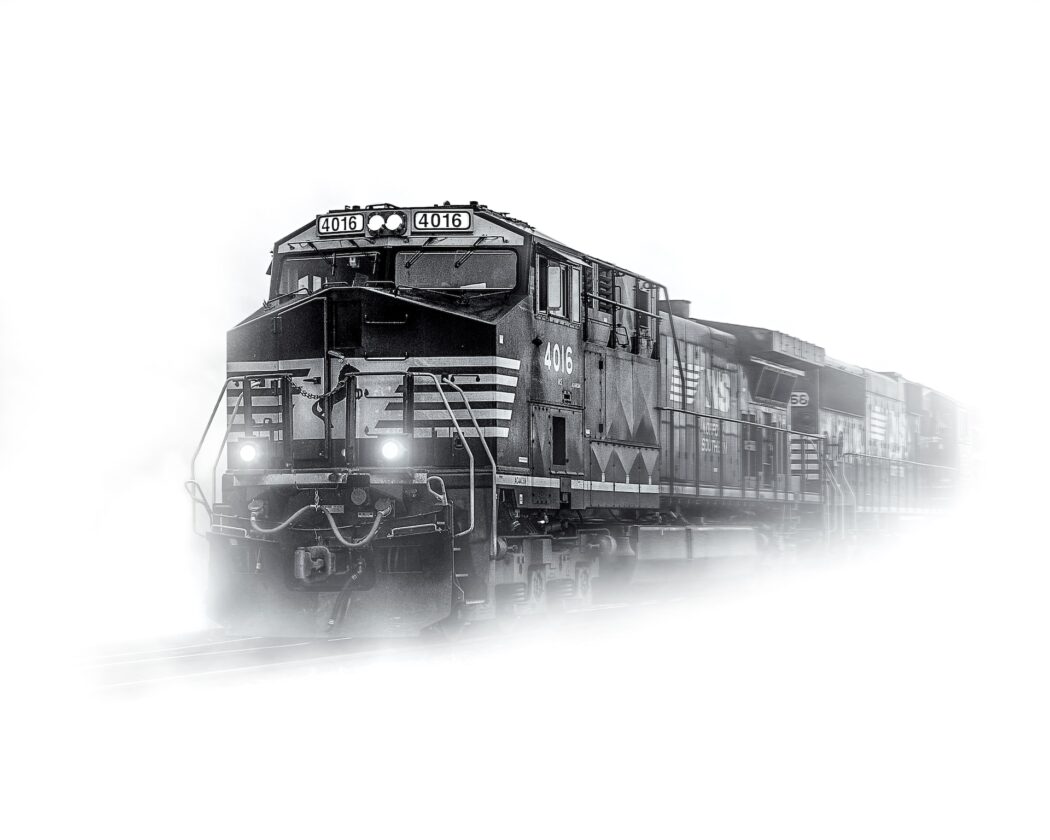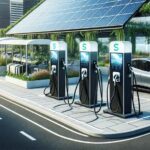Unveiling the mystery behind train propulsion, this comprehensive guide delves into the fuels powering locomotives.
From the traditional steam to the contemporary diesel and electric modes, this article explores how technological advancements and environmental considerations have shaped the locomotive industry.
Fuels Powering Locomotives: A Historical and Modern Perspective
Over the past two centuries, locomotives have undergone numerous technological transformations, significantly affecting the types of energy sources used for propulsion. Presently, most of these rail vehicles are propelled by either petroleum diesel or electric currents. With increasing environmental awareness, there is a gradual shift towards biodiesel and renewable energy sources, often in a diesel-electric combination.
Milestones in Train Fuel Evolution
Railway vehicles have evolved tremendously since their inception, utilizing a variety of energy sources throughout history:
- Steam Locomotives: Initially fueled by coal and wood, they ushered in the railway era;
- Diesel Locomotives: Gaining prominence in the 1930s, these utilize petroleum diesel for propulsion;
- Electric Locomotives: Representing the pinnacle of modernity, these are increasingly common today and use electrical energy for operation.
Each of these technologies has its own unique development timeline, sometimes overlapping with each other. Today, hybrid engines combining two different types of propulsion technologies also exist.
Different Types of Locomotive Fuels and Their Characteristics
Steam Propulsion:
- Mechanism: In steam-powered systems, materials like coal or wood are incinerated in a boiler to create steam. This steam is then funneled into cylinders connected to the wheels, causing the locomotive to move forward;
- Fuel Carriage: A specialized car usually accompanies the steam engine to carry water and the solid fuels required for combustion.
Diesel Propulsion:
- Mechanism: Similar to diesel vehicles, a substantial internal combustion engine generates electricity that is then channeled to electric motors linked to the wheels;
- Fuel Storage: Unlike steam systems, diesel fuel is stored in tanks integrated into the lower section of the locomotive;
- Advantages: Simplicity and scalability are among the benefits, as multiple locomotives can be linked to handle heavier loads.
Electric Propulsion:
- Mechanism: A pantograph on the roof collects electrical power from overhead cables, supplying the locomotive’s motors;
- Use Cases: Commonly employed in urban transport applications, including trams and trolleybuses;
- Cost Factor: With prices reaching up to $7,500,000, electric locomotives are significantly more expensive compared to their diesel counterparts.
Electric vs. Diesel-Electric: Key Distinctions
While both types employ electrical motors, electric locomotives rely solely on external electrical sources, such as overhead lines or batteries. Diesel-electric systems, on the other hand, generate electrical power through an internal combustion engine, which is then channeled to the electric motor that performs the heavy lifting.
Pure electric systems tend to be quieter, as they do not have the mechanical and exhaust noise associated with internal combustion engines. Consequently, they also have lower maintenance requirements.
Future Trends in Locomotive Propulsion
As we look towards the future, the push for eco-friendly propulsion options is stronger than ever. Research into hydrogen fuel cells and battery-electric locomotives is gathering pace. These technologies promise not only to reduce the carbon footprint but also to deliver comparable, if not superior, performance metrics.
Understanding the different types of fuels and propulsion systems in locomotives provides invaluable insights into the ongoing evolutions and future trends of the railway industry. While traditional steam and diesel systems remain in use, electric and hybrid options are quickly gaining ground, driven by technological advancements and the urgent need for environmental sustainability.
Advancements in Rail Propulsion: A Study in Efficiency and Sustainability
The continued reliance on rail systems for the transportation of goods and people has much to do with its economic viability. According to data from the CSX Corporation, transporting freight via railways is approximately four times more cost-effective than utilizing road networks and trucks. Additionally, the lower consumption of energy resources in rail systems leads to reduced greenhouse gas emissions, making it a more environmentally sustainable option.
This financial analysis generally considers petroleum diesel-powered locomotives in comparison with trucks that are similarly powered.
Historically, before diesel-electric locomotives became prevalent, steam propulsion was the leading force that allowed the locomotives to pull carriages along rail tracks. Even today, this form of propulsion is not entirely obsolete; it finds applications in niche areas such as mining in certain parts of China and serves as an attraction in heritage railways like the Elgin Railway Market in South Africa.
The Evolution of Locomotive Propulsion Systems
Steam Propulsion
Richard Trevithick, a renowned British inventor and mining engineer, is credited with bringing steam propulsion to the forefront of locomotive technology. While rudimentary wheeled carts pulled by manual labor or animals date back to ancient times around 2200 BC, it was Trevithick’s introduction of steam propulsion in 1904 that revolutionized locomotive travel.
The first commercially successful steam locomotive was named “Salamanca” and was launched in Leeds, UK, in 1812. Developed by Matthew Murray, this marked the commencement of the era of steam propulsion in railways.
Electrification of Railways
During the industrial boom of the 19th century, railways were becoming increasingly indispensable for the movement of goods and passengers. Robert Davidson, a British chemist, assembled the first battery-powered locomotive in 1837. However, battery technology of that time couldn’t meet the demands of long-haul travel.
Fyodor Pirotsky, a Ukrainian engineer, made strides in this area by converting a double-decker horse carriage into an electric tram in 1875. Siemens pioneers, Carl and Werner, built upon Pirotsky’s concept and within years showcased a carriage powered by a 180V DC overhead wire. By the 1890s, electric rail networks began to sprout in the United States, connecting places like New York and Baltimore.
Italy’s Valtellina line, launched in 1902, was the first to employ a long-distance electrical traction system utilizing three-phase electrical power. Over the next four decades, 50Hz industrial frequency became the standard electrical frequency for railways globally.
The Rise of Diesel Propulsion
The introduction of the compression-ignition engine by Rudolf Diesel in 1898 set the stage for diesel-powered rail travel. Early diesel locomotives faced limitations in their power-to-weight ratios, making them unsuitable for mainstream adoption.
However, a groundbreaking moment occurred in 1912 when the Prussian State Railways unveiled a 95-ton locomotive with an operational output of 883Kw, albeit with a top speed of just 60 mph. Subsequent innovations, particularly the DC electrical control system by Hermann Lemp, made diesel-electric locomotives commercially viable.
Where Rail Propulsion is Headed: An Ongoing Evolution
While steam locomotives are now mostly relegated to museums or serve as historical artifacts, diesel-electric and purely electric locomotives remain prevalent. But with a growing focus on sustainability and efficiency, there’s a strong inclination towards complete electrification in the future of locomotive propulsion.
Future of Rail Propulsion: Hydrogen and Beyond
As the world continues to evolve, so do our means of railway propulsion. With green energy consumption rising in importance, more renewable resources are being considered for future railway systems. For instance, hydrogen fuel cells are showing great promise as a clean, efficient, and sustainable form of locomotive energy. They offer:
- Zero-emissions: Water is the only byproduct;
- Energy efficiency: They are more energy-efficient than combustion engines;
- Quick refueling: Unlike electric batteries, hydrogen tanks can be filled as quickly as diesel tanks.
Hydrogen-powered trains, also known as hydrail, have already been successfully piloted in Germany and are on the brink of transforming the future landscape of rail propulsion systems globally.
The technology behind what drives locomotives has undergone immense transformation over the years and will continue to adapt to global energy, economic, and environmental demands.

Concluding Insights: Navigating the Arc of Railway Propulsion
In summary, the journey of railway propulsion is a captivating narrative of innovation, efficiency, and adaptability. Starting from rudimentary carts to sophisticated locomotives, the railway industry has continuously refined its approach to mobility, balancing economics with sustainability. From the steam engines that marked the dawn of industrialized travel to the diesel-electric hybrids that dominate today, each era has brought a new facet of technological ingenuity to the tracks.
Electrification of rail networks marked a significant shift, not only improving efficiency but also reducing the environmental footprint. And now, as the world grapples with urgent sustainability challenges, the focus is shifting towards cleaner, renewable sources like hydrogen fuel cells. The railway industry, ever so evolving, stands at the brink of another transformative era, guided by a commitment to both economic viability and environmental stewardship.











